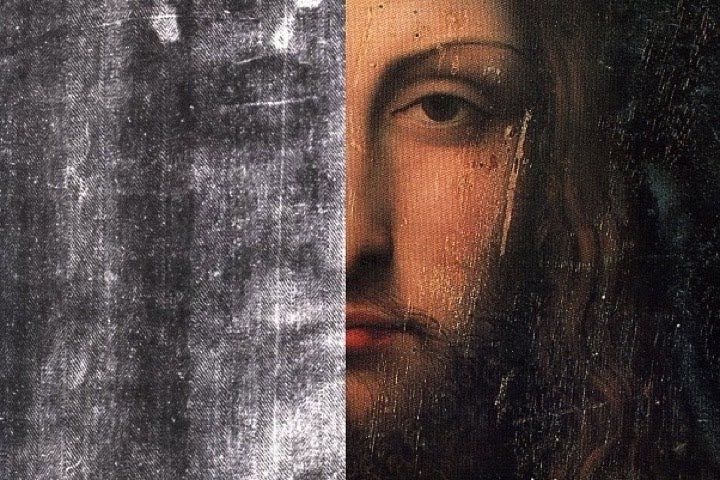Italian scientists have conducted a new study of the Shroud of Turin - a famous relic revered by the Catholic and Orthodox Churches. This time was applied a modern method of analysis, which allows you to more accurately determine the age of the fabric. This writes the Daily Mail, calling the discovery “stunning”: the result brings experts closer to recognizing the authenticity of the Shroud, which has long remained a subject of scientific debate.

The burial shroud in which, according to the Holy Scriptures, Jesus Christ was wrapped after his crucifixion, was first put on public display in the middle of the fourteenth century. On the front and back of the linen cloth, a barely recognizable brownish image of a bearded man is imprinted on the front and back. According to believers, these are non-manual imprints of the Savior's body taken down from the cross. On the image there are traces which correspond to wounds of Jesus received at his torture and crucifixion.
Nowadays the relic is kept in the Cathedral of St. John the Baptist in Turin, Italy, therefore it is called the Shroud of Turin. It has suffered four fires, but the dark brown imprint on the cloth is still preserved.
Scientists have always been interested in this cloth, but the Vatican allowed scientific research only in the second half of the XX century. Since the 1980s were published more than 170 scientific papers devoted to the study of the Shroud. Opinions are divided: someone believes that it is a skillful forgery, someone recognizes the authenticity of the artifact.
The most famous study was conducted in 1988. Then an international team of scientists analyzed a small fragment of the Shroud with the help of radiocarbon dating and concluded that the fabric, apparently, was made between 1260 and 1390 years AD. That is, in the Middle Ages, not 2,000 years ago, when Jesus lived.
After that, skeptics decided that the question is closed. However, science does not stand still - there are new methods of research, including those related to dating. One of them - the method of wide-angle X-ray scattering (WAXS) - and applied scientists from the Institute of Crystallography of the National Research Council of Italy.
This method measures the natural aging of linen pulp and calculates the time that has elapsed since the material was manufactured. Cellulose is made up of long chains of sugar molecules that decompose over time - from them and can determine how long the fabric has lasted.
Italian scientists took eight small samples of fabric from the Shroud of Turin and subjected them to X-ray irradiation to reveal the smallest details of the structure of the cloth. So they found out that the artifact appeared during the life of Jesus Christ, about 2 thousand years ago.
During the study, experts compared the degree of destruction of cellulose with other ancient fabrics, about which it was reliably known that they were made in Israel in the I century AD. The results were very similar. But no matches were found with fabric samples from the thirteenth through fourteenth centuries. This casts doubt on the results of the study in 1988, which dated the Shroud to the Middle Ages.
“The findings are fully compatible with similar measurements of a sample of linen cloth dating from 55-74 A.D., according to historical records, and found in the ancient Israeli fortress of Masada,” the published study said.
In addition, scientists determined in what conditions the shroud was in before it was presented to the public in the mid-14th century. The analysis showed that for 13 centuries, the material was apparently stored at an average temperature of 22.5 ℃ and relative humidity of 55%. If the conditions had been different, the aging process would have looked different, the researchers said.
How can we explain that the results of the 1988 study were not confirmed? After all, the radiocarbon dating method used then was well-proven.
Liberato De Caro from the Institute of Crystallography, the lead author of the latest study, suggests that the results of the late 1980s could have been distorted by contamination of samples, which is natural for old tissue. The new method, however, allows for a more accurate determination of the artifact's age.
Daily Mail recalls another study conducted in 2017. Then another group of experts from the same institute announced that they found traces of blood on the Shroud of Turin. In their composition were found creatinine and ferritin - substances that are detected in people who have suffered violence with injuries and beatings.


















